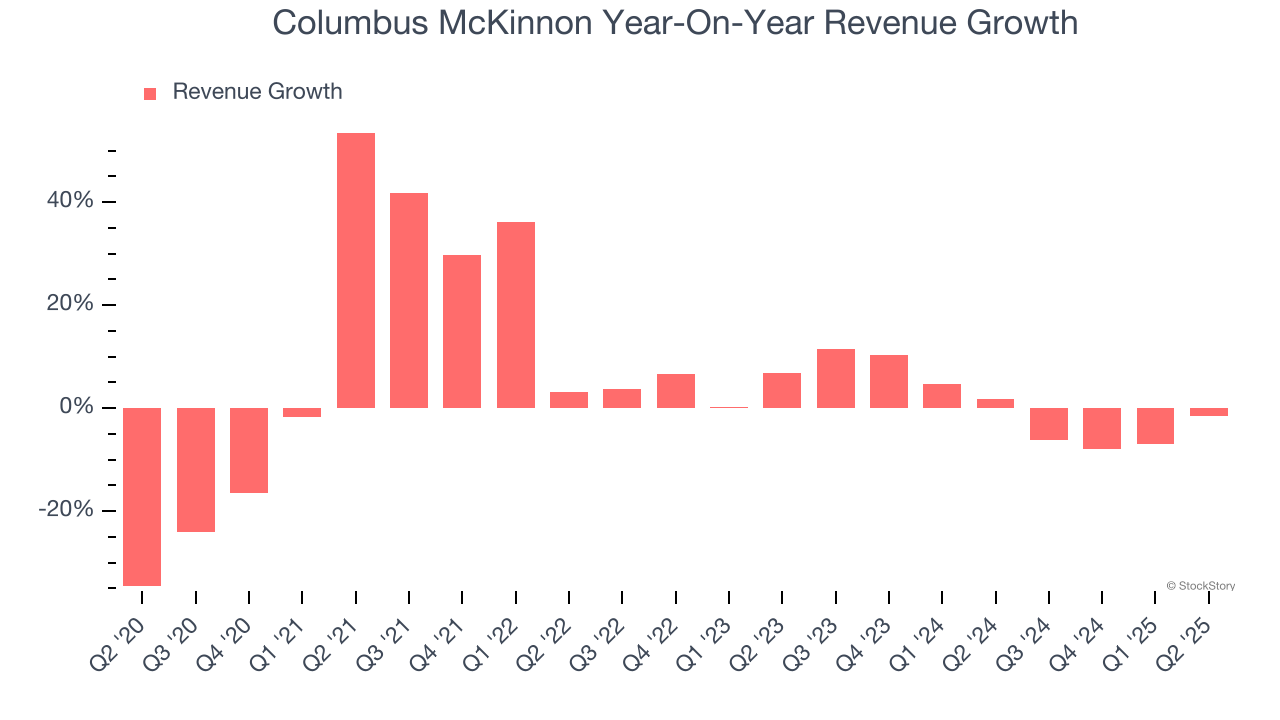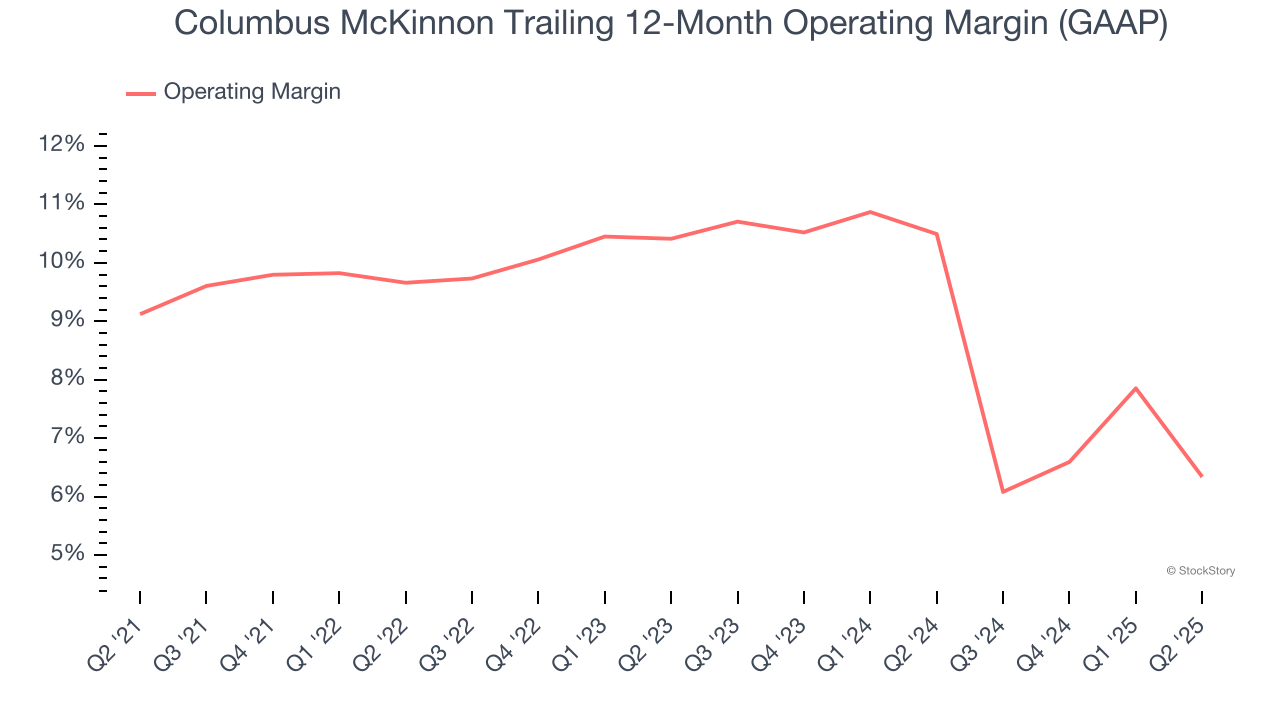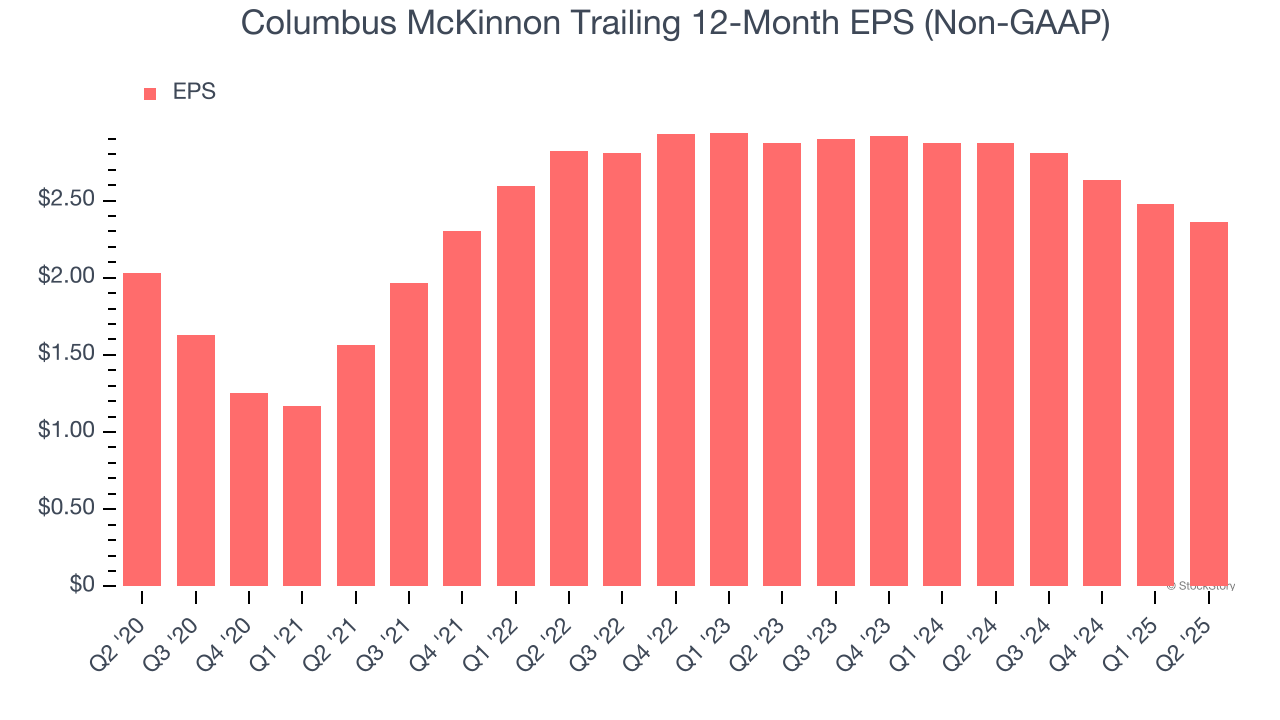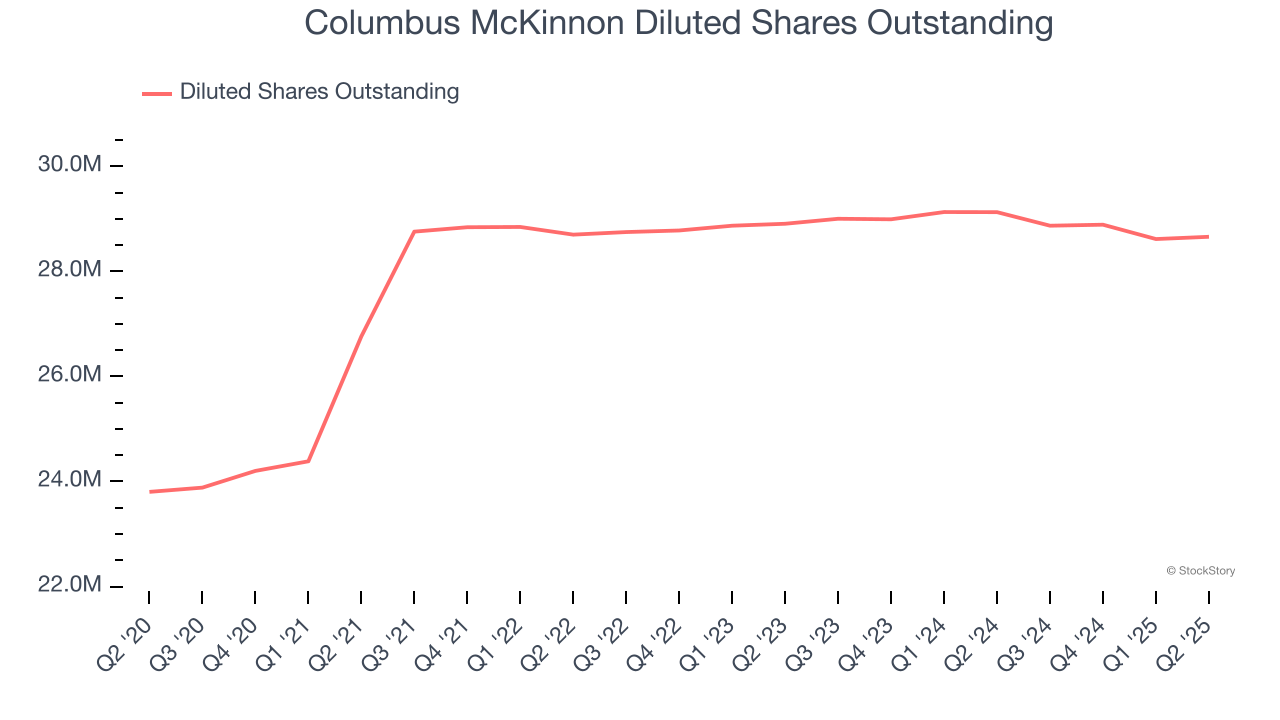
Material handling equipment manufacturer Columbus McKinnon (NASDAQ:CMCO) reported Q2 CY2025 results topping the market’s revenue expectations, but sales fell by 1.6% year on year to $235.9 million. Its non-GAAP profit of $0.50 per share was 7% above analysts’ consensus estimates.
Is now the time to buy Columbus McKinnon? Find out by accessing our full research report, it’s free.
Columbus McKinnon (CMCO) Q2 CY2025 Highlights:
- Revenue: $235.9 million vs analyst estimates of $230.9 million (1.6% year-on-year decline, 2.2% beat)
- Adjusted EPS: $0.50 vs analyst estimates of $0.47 (7% beat)
- Operating Margin: 2.3%, down from 8.5% in the same quarter last year
- Free Cash Flow was -$21.36 million compared to -$15.39 million in the same quarter last year
- Backlog: $360.1 million at quarter end
- Market Capitalization: $478.2 million
"The first quarter largely played out as expected as we delivered sustained order growth in an environment where global tariff policies pressured near-term results," said David J. Wilson, President and Chief Executive Officer.
Company Overview
With 19 different brands across the globe, Columbus McKinnon (NASDAQ:CMCO) offers material handling equipment for the construction, manufacturing, and transportation industries.
Revenue Growth
A company’s long-term sales performance is one signal of its overall quality. Any business can have short-term success, but a top-tier one grows for years. Over the last five years, Columbus McKinnon grew its sales at a tepid 5.5% compounded annual growth rate. This was below our standard for the industrials sector and is a poor baseline for our analysis.

We at StockStory place the most emphasis on long-term growth, but within industrials, a half-decade historical view may miss cycles, industry trends, or a company capitalizing on catalysts such as a new contract win or a successful product line. Columbus McKinnon’s recent performance shows its demand has slowed as its revenue was flat over the last two years. 
This quarter, Columbus McKinnon’s revenue fell by 1.6% year on year to $235.9 million but beat Wall Street’s estimates by 2.2%.
Looking ahead, sell-side analysts expect revenue to grow 2.6% over the next 12 months. While this projection suggests its newer products and services will catalyze better top-line performance, it is still below average for the sector.
Unless you’ve been living under a rock, it should be obvious by now that generative AI is going to have a huge impact on how large corporations do business. While Nvidia and AMD are trading close to all-time highs, we prefer a lesser-known (but still profitable) stock benefiting from the rise of AI. Click here to access our free report one of our favorites growth stories.
Operating Margin
Operating margin is one of the best measures of profitability because it tells us how much money a company takes home after procuring and manufacturing its products, marketing and selling those products, and most importantly, keeping them relevant through research and development.
Columbus McKinnon has done a decent job managing its cost base over the last five years. The company has produced an average operating margin of 9.2%, higher than the broader industrials sector.
Analyzing the trend in its profitability, Columbus McKinnon’s operating margin decreased by 2.8 percentage points over the last five years. This raises questions about the company’s expense base because its revenue growth should have given it leverage on its fixed costs, resulting in better economies of scale and profitability.

In Q2, Columbus McKinnon generated an operating margin profit margin of 2.3%, down 6.1 percentage points year on year. Since Columbus McKinnon’s operating margin decreased more than its gross margin, we can assume it was less efficient because expenses such as marketing, R&D, and administrative overhead increased.
Earnings Per Share
We track the long-term change in earnings per share (EPS) for the same reason as long-term revenue growth. Compared to revenue, however, EPS highlights whether a company’s growth is profitable.
Columbus McKinnon’s EPS grew at a weak 3.1% compounded annual growth rate over the last five years, lower than its 5.5% annualized revenue growth. This tells us the company became less profitable on a per-share basis as it expanded.

We can take a deeper look into Columbus McKinnon’s earnings to better understand the drivers of its performance. As we mentioned earlier, Columbus McKinnon’s operating margin declined by 2.8 percentage points over the last five years. Its share count also grew by 20.4%, meaning the company not only became less efficient with its operating expenses but also diluted its shareholders. 
Like with revenue, we analyze EPS over a more recent period because it can provide insight into an emerging theme or development for the business.
For Columbus McKinnon, its two-year annual EPS declines of 9.3% show it’s continued to underperform. These results were bad no matter how you slice the data.
In Q2, Columbus McKinnon reported EPS at $0.50, down from $0.62 in the same quarter last year. Despite falling year on year, this print beat analysts’ estimates by 7%. Over the next 12 months, Wall Street expects Columbus McKinnon’s full-year EPS of $2.36 to grow 14%.
Key Takeaways from Columbus McKinnon’s Q2 Results
We enjoyed seeing Columbus McKinnon beat analysts’ revenue expectations this quarter. We were also happy its EPS outperformed Wall Street’s estimates. Overall, this print had some key positives. The stock remained flat at $16.86 immediately after reporting.
Sure, Columbus McKinnon had a solid quarter, but if we look at the bigger picture, is this stock a buy? If you’re making that decision, you should consider the bigger picture of valuation, business qualities, as well as the latest earnings. We cover that in our actionable full research report which you can read here, it’s free.
